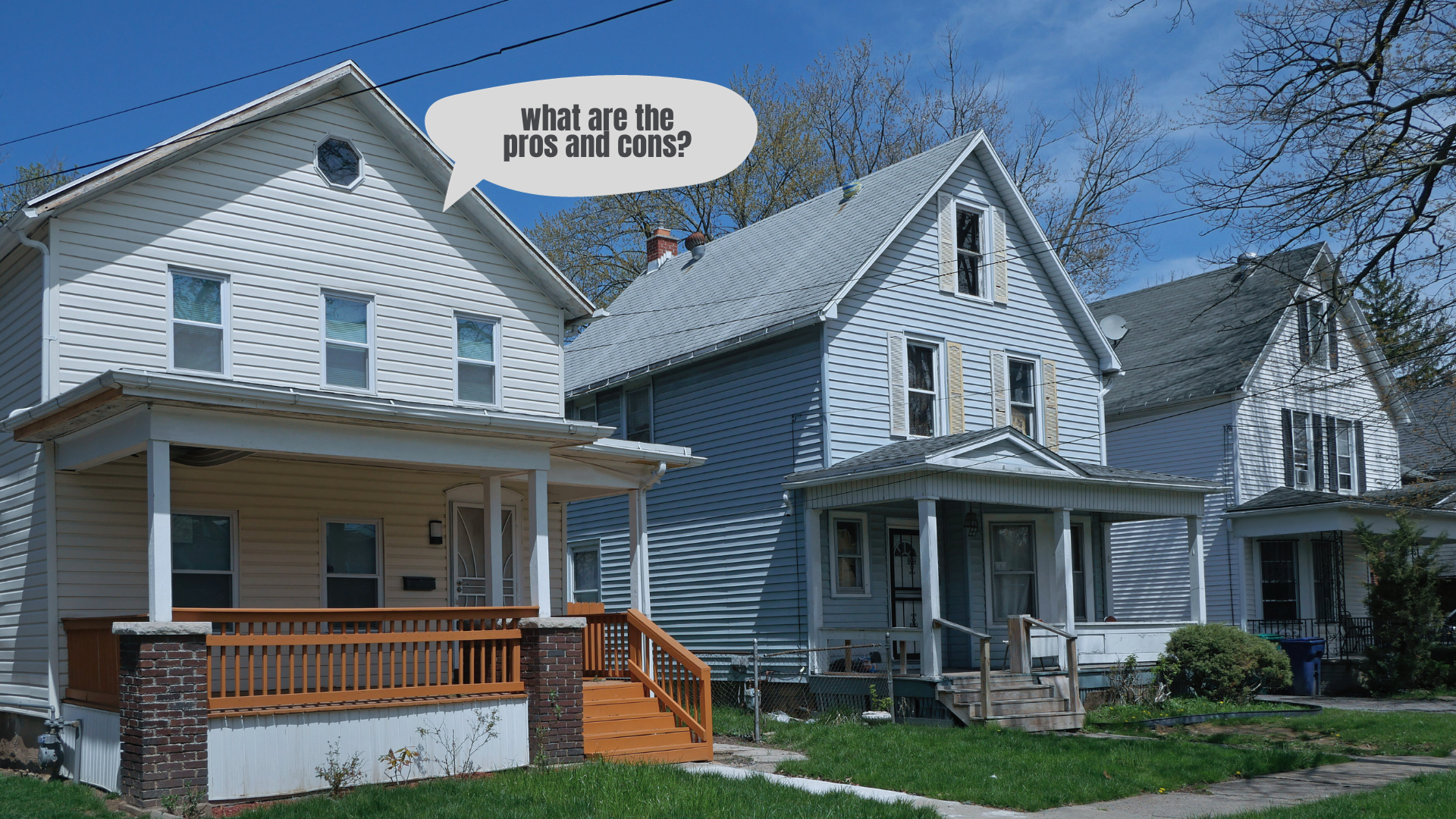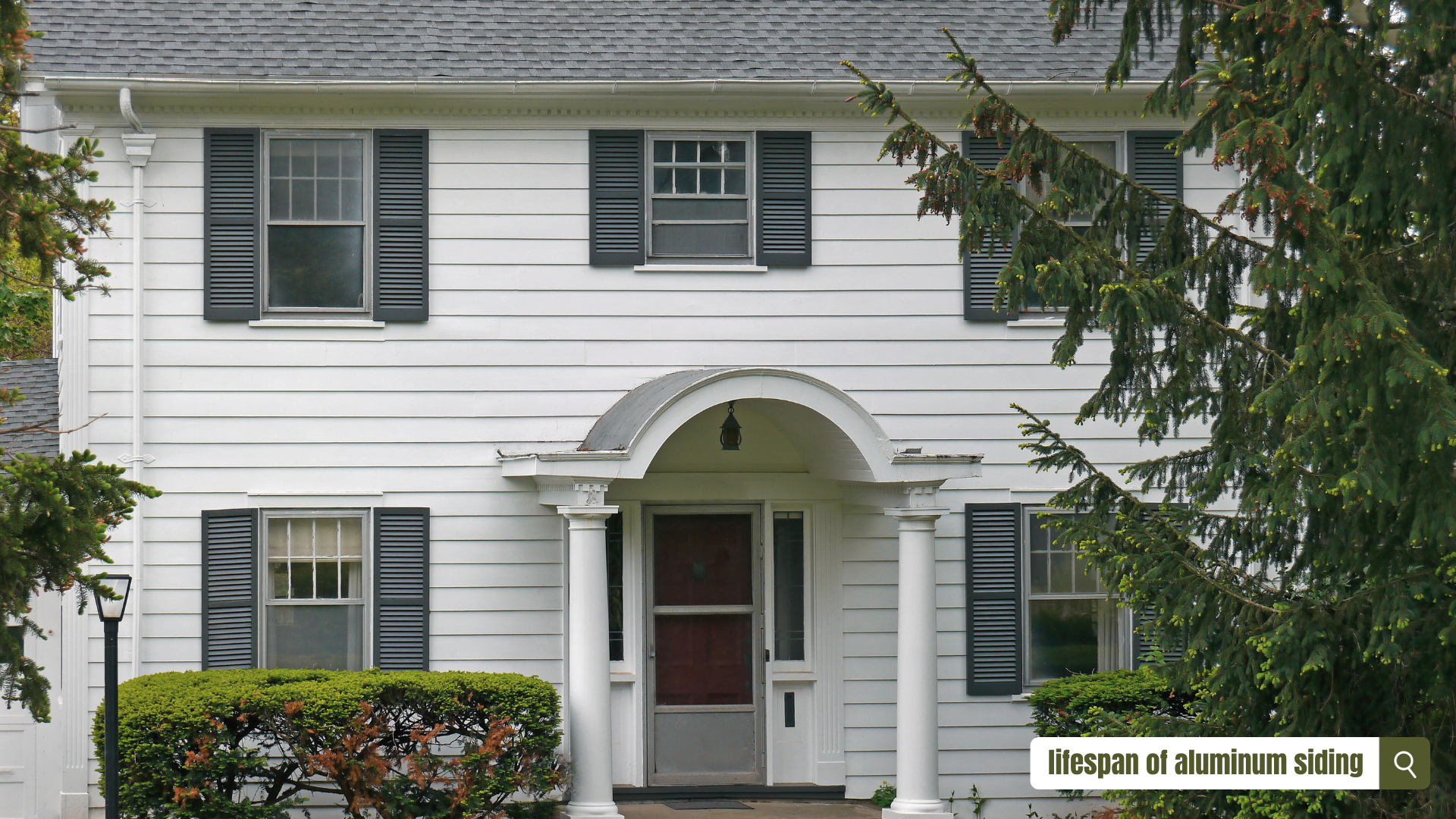In simple terms, siding is the protective material attached to the exterior of houses or residential buildings. Although it first appeared as an alternative to steel in the 1920s, modern aluminum siding was invented by an Indiana machinist, Frank Hoess, in the late 1930s and patented in 1939. Once, but no longer, the most commonly used siding, let’s examine its pros, cons, and longevity.
Aluminum siding has lost much of its popularity since the 1970s, but its inherent qualities remain. It’s lightweight, easily installed, durable and relatively inexpensive. Its disadvantages include a susceptibility to scratches and dents, a tendency to fade, and its austere industrial appearance.
From the mid-1940s, after World War II, right up to the 1970s, aluminum was the most common choice of material for siding. Because of its many positive features, it was used extensively in residential and industrial buildings, but the introduction of other materials and the increased cost of aluminum resulted in a decline in its popularity. That is, until recently – it’s made something of a comeback. Let’s look at the reasons.
The Pros, Cons, and Longevity of Aluminum Siding
The inherent qualities that made aluminum such a good choice still apply, so let's identify them before looking at the downside.

The Pros of Aluminum Siding
Here are the benefits of choosing aluminum for your house's exterior:
The Cons of Aluminum Siding
Here are the drawbacks of choosing aluminum for your house's exterior:
What is the Lifespan of Aluminum Siding?
When it was first introduced as a siding option, the longevity of aluminum siding was a strong selling point. It can last, with minimal maintenance, up to 40 years, and even longer in the right conditions. That fact was a massive plus factor when compared to wood siding which was commonly used at the time.
Today, with the advent of vinyl, fiber cement, and composite siding, all of which have comparable or even better longevity, the lifespan of aluminum is not that important a factor when choosing what siding to install.
What are the Alternatives to Aluminum Siding?
Having looked at the advantages and disadvantages of aluminum siding, let’s investigate what other materials it has to compete with.
free guide
12 MODERN CURB APPEAL IDEAS
Wood Is One Of The Original Sidings
It has many advantages but many disadvantages, too. It’s a renewable natural resource and biodegradable after use, so it’s very environmentally friendly. Traditional homes especially benefit from the elegance of wood siding as opposed to artificial products, and it has graced older homes for hundreds of years, so it is durable if properly maintained.
The main disadvantage of wood is that it is expensive, as production is slow compared to other forms of siding. It is also high maintenance, needing constant protection from termites and other infestations. It also requires regular sanding and re-sealing to prevent rotting and warping problems.
Vinyl Siding Is The Most Inexpensive Option
It’s available in an enormous range of colors, and it’s exceptionally durable if fitted correctly. Because the color is impregnated into the material and not a coating, you’ll never have to paint vinyl siding, and it's very low-maintenance.
On the downside, vinyl siding can look cheap and nasty, and if used on a traditional home, will probably lower its value rather than enhance it. Vinyl surfaces also cannot be easily painted, so re-decorating the exterior walls of your home is not an option. It cannot be recycled, has a lower heat rating than other sidings, and can melt or burn in the case of a fire. (Related article: Vinyl Siding Cost And Consumer Guide)
Fiber cement: Longevity Is Its Most Significant Advantage
Fiber cement siding has an estimated lifespan of 50 years. It’s insect-resistant, fireproof, requires painting only every five to ten years, and rot-resistant, so maintenance requirements are minimal.
Disadvantages of fiber cement siding include the fact that it’s one of the more expensive options. It's also one of the heaviest siding products, so it's not easily installed and is not recyclable. It's also liable to become brittle and, being porous, tends to get moldy in a damp environment.
Brick Is Still The Elegant Choice
As a siding instead of a structural part of a house, brick is still the symbol of quality and elegance but is purely decorative. As a siding, it doesn't crack or swell, is moisture-resistant, and requires very little maintenance. For classic-style homes, brick veneer is a very popular choice of siding.
The disadvantage of brick is that the color choices are limited, and because of the nature of the single-brick veneer, it’s not as effective an insulator as most other sidings without additional insulation material. It’s also one of the most expensive sidings, and maintenance of the mortar between the brickwork may be required over the years, as it does deteriorate.
Stucco Siding Is Perfect In Drier Climate Zones
This siding is a plaster-like finish made of cement, lime, sand, and water, usually mixed with polymers for increased flexibility. Known for its durability and strength, as it dries to a rock-hard finish, stucco is very popular as a siding in drier parts of the country like the southwestern US but is not effective in areas with higher rainfall.
Stucco is perfect for many styles of architecture and has the longest lifespan of all sidings at up to 100 years, in fact. Its main drawback is that it is expensive, and because it is applied in four separate layers, it needs an expert to do the job.
Final Thoughts
While aluminum siding has many benefits, including durability, versatility, cost-effectiveness, and ease of installation, it has become less popular than many of the newer alternatives that have, in many cases, equal or better advantages, having been developed more recently. Aluminum, though, remains the choice of many builders and renovators, and there are still many good reasons for that.
(Related article: Understanding LP Siding: Pros, Cons, and Maintenance Tips)


